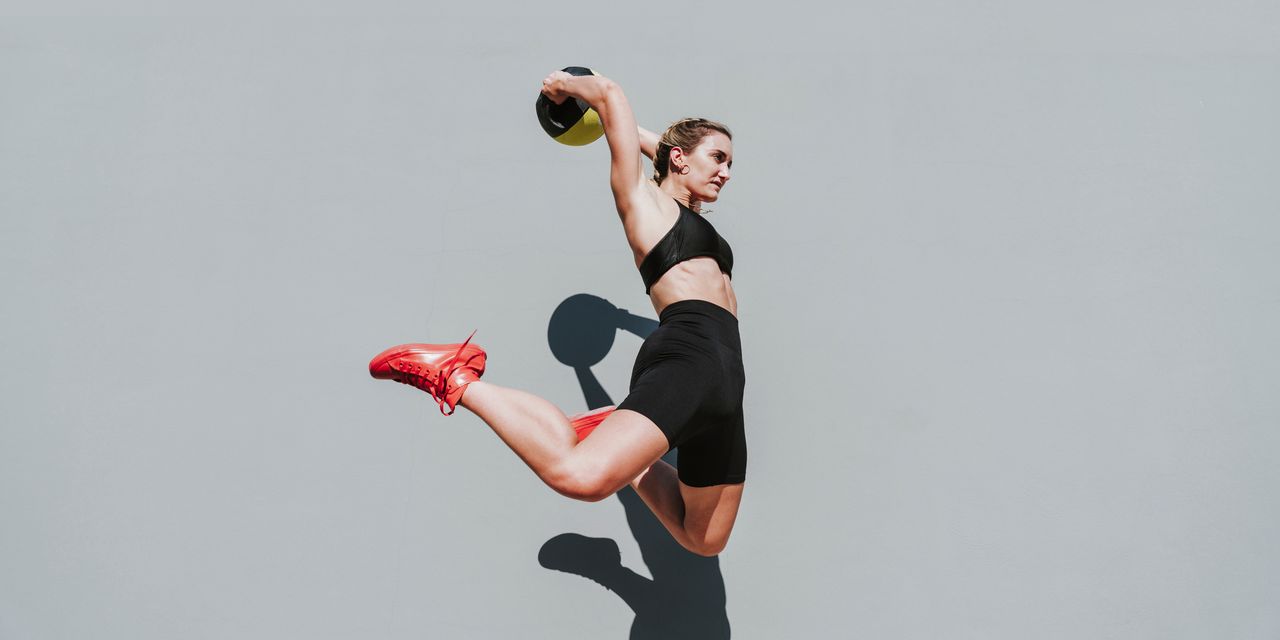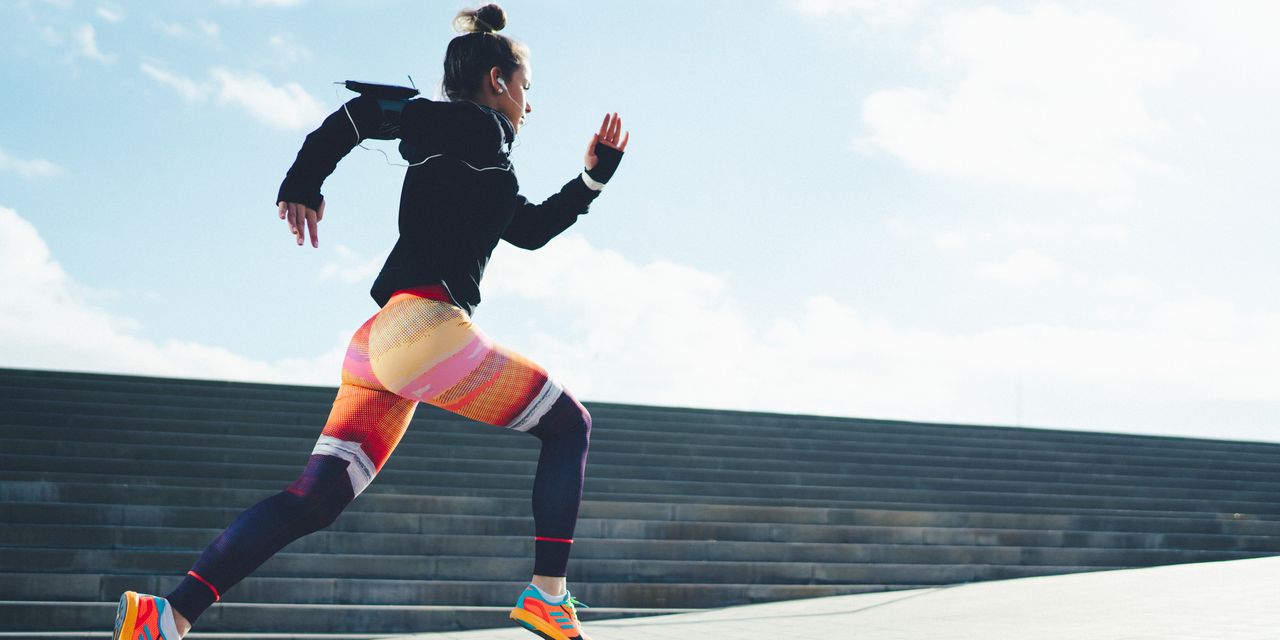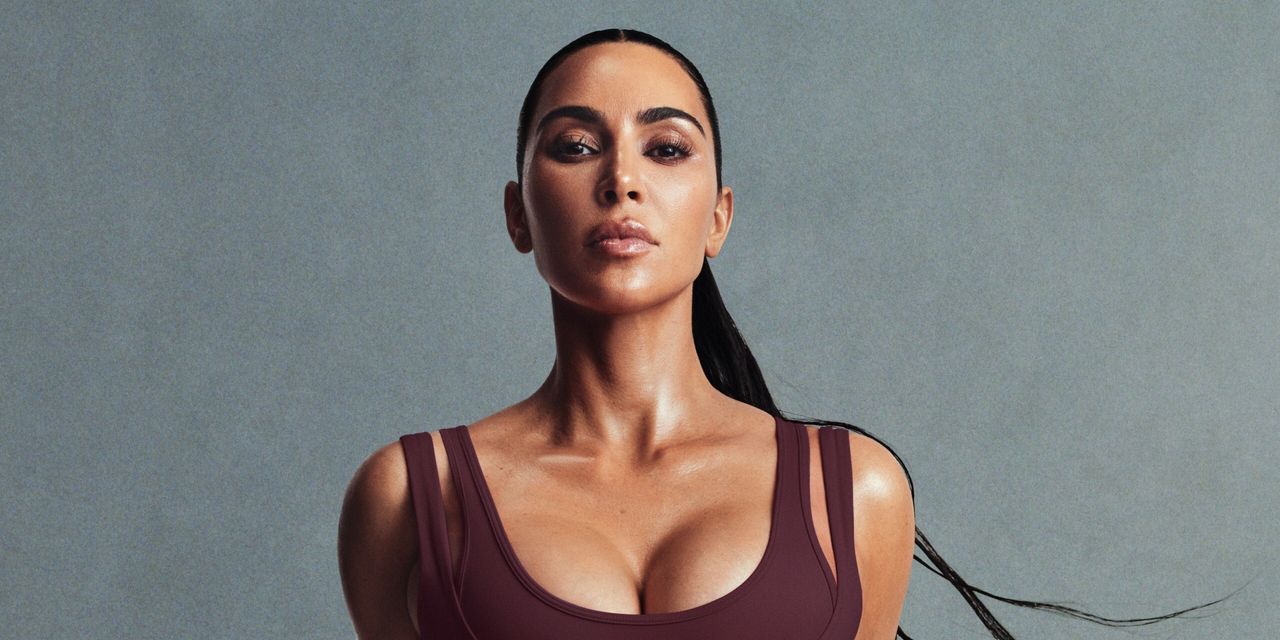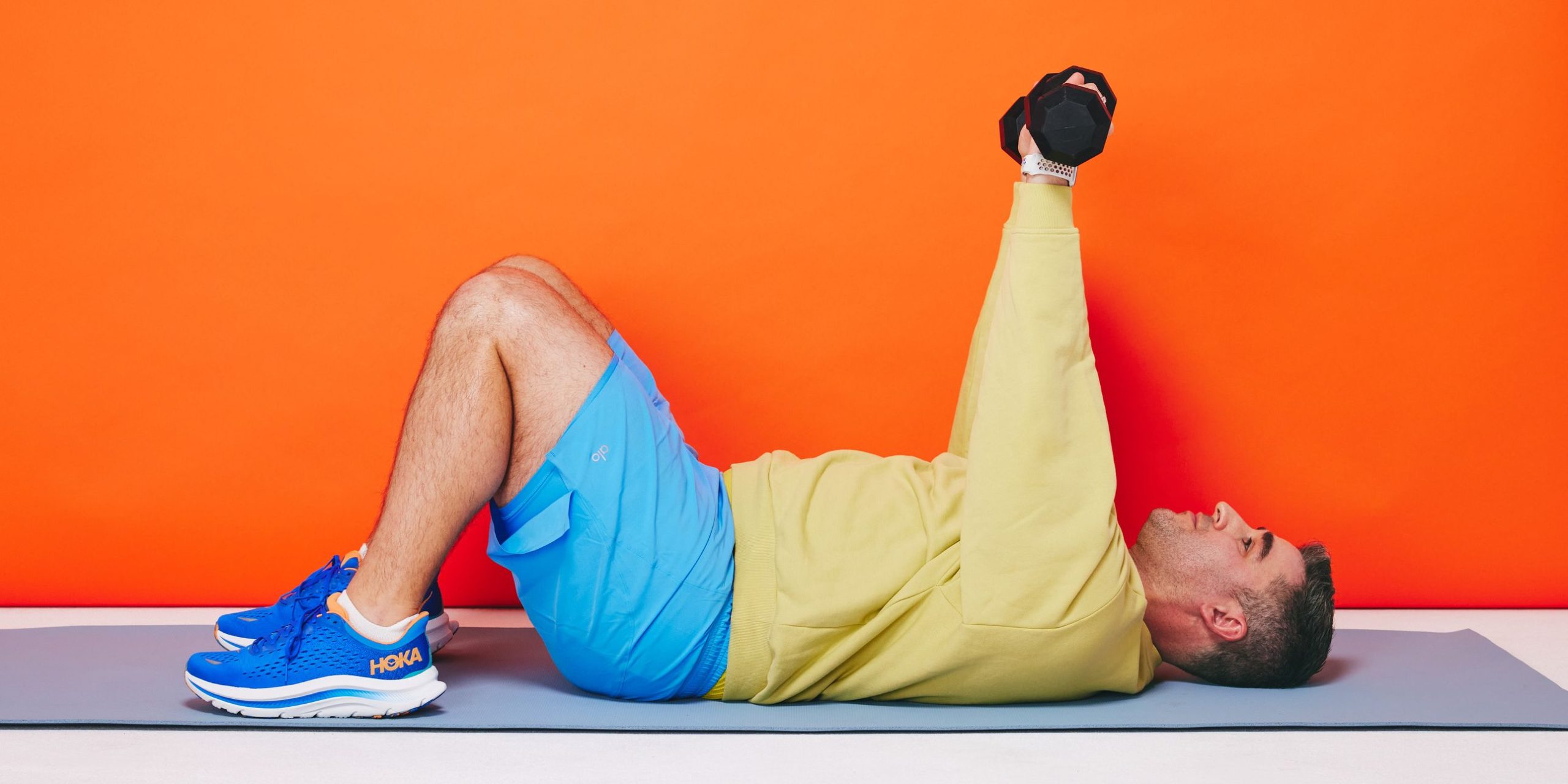Is the New Oura Ring Worth the Splurge? I Wore It for 10 Weeks to Find Out
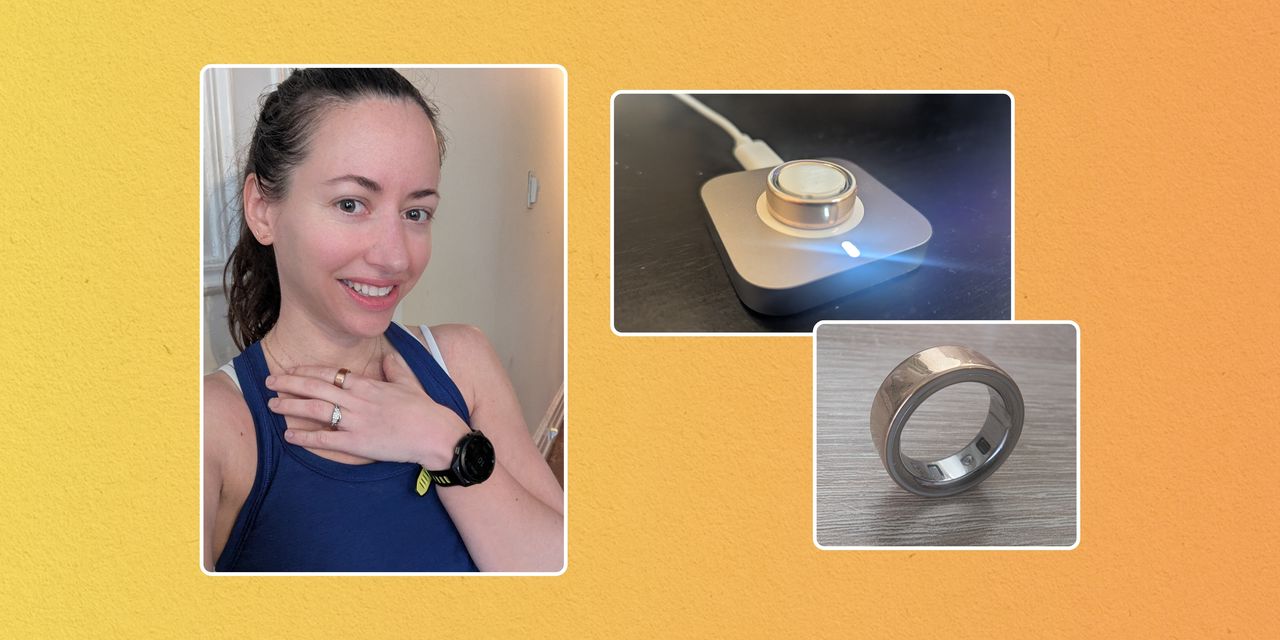
Over the years, I’ve tested out more wearables than I can count. I’m a runner and avid weight lifter—and huge health data nerd—so any metrics I can get on those fronts is a huge plus to me. In the past, my device of choice has always been a watch, but recently, I dipped my toe (finger?) into the smart ring pool, and when I got the opportunity to test out Oura’s newest release, I jumped to see how the OG ring brand measured up.
For 10 full weeks, I slept, worked, ran, walked, biked, and even showered with the new Oura Ring 4 (from $349, ouraring.com), an all-encompassing smart device touted to be “the first wearable designed to paint a truly holistic picture of your health.” At the same time, my trusty Garmin Forerunner 265 remained firmly slapped on my wrist for comparison sake (and, full disclosure, because that awesome watch tan line isn’t ready to see the light of day). Read on for my full review to see how it all shook out.
Ring sizing
Smart rings require a little extra work up-front than watches do: You need to actually order a specific ring size. And that can be tricky to get right, because rings on the smart side tend to run a little differently than the ones you wear in everyday life—so even if you know your regular size by heart, you’ll have to spend some time researching and measuring your finger to make sure you’re picking the right size for any specific brand of smart ring.
Thankfully, Oura makes this easy for you. When you order on their site, you have the option of choosing a free sizing guide, which comes with 12 white plastic rings spanning from size 4 to 15. To secure your perfect fit, try for your index, middle, or ring finger, Oura says; you want it to fit snugly but not uncomfortably, with no gaps between device and finger when you make a fist. Truthfully, I had a hard time finding a solid fit, even with all the options given. I wanted to wear my Oura on my right hand, but dealt with a Goldilocks situation with those fingers—the options were either too tight or too loose, and never just right. I ended up going with a size 7 (a full size above my everyday styles) for my left index finger, though I’m not a huge fan of wearing rings there.
Original photo taken by SELF director of fitness and food Christa Sgobba
Choosing your style
Unlike smartwatches, which have a more, um, functional, appearance, the Oura ring is designed with style in mind: You can choose from silver, black, brushed silver, stealth, gold, and rose gold finishes; the price varies with each. The first two are the entry level options at $349; the next two your middle ground at $399, and the final two your highest-end choices at $499.
Let me tell you, I struggled to make my final choice here. I wear a mixture of medals on my hands: white gold for my wedding and engagement rings on my left hand, and yellow gold for some more fun stuff on my right. Since I was going to wear Oura on my left, I originally went for silver, but that option wasn’t available when I was ordering. So then I was left with the burning question: which gold matches best with the yellow kind I already wear?! Reddit came in clutch here. A quick perusal of the Oura subreddit assured me that rose gold actually mirrored the 14k stuff better than its yellow gold option, which folks say matches better with 18k or higher. So I went with rose gold and was happy with my choice. It doesn’t look too pinky, and perhaps more importantly I haven’t noticed any signs of chipping, wear, or discoloration in the 10 weeks I’ve been wearing it.
Original photo taken by SELF director of fitness and food Christa Sgobba
Unboxing the Oura 4
Thanks to the sizing kit, when the Oura 4 arrived, there were no surprises with fit, though the actual rose gold device seemed chunkier on my small hands than the tester did. It’s definitely thicker than rings I normally wear, but it never actually felt uncomfortable. (I’m not used to wearing rings on my index finger though, and that did take some getting used to.)
Other than the ring itself, the Oura 4 also came with a charging station and a charging cable. The station was pretty cute; it’s a small silver square that you just plop the ring on to juice it up, with an LED light that stays on to let you know that it’s working.
Original photo taken by SELF director of fitness and food Christa Sgobba
Getting started
Unlike a watch, which can show some data on its screen, the Oura ring relies solely on an app to share its info. So firing up the Oura app was the first order of business: Downloading it to my Android was simple (it’s supported on Androids running 9 or above, or iOS at 15 or higher), and once I opened it it immediately recognized my ring.
The Oura app prompted me to set up my profile—common metrics like sex, date of birth, height, and weight, along with other things like my current goal (I chose “improve my athletic performance,” but others focused on mindfulness, creativity, stress, and health), how I sleep at the moment, and things affecting my sleep. It uses these things to inform its algorithm, giving you more individualized data.
One callout from the get-go: You’ll need an Oura subscription for the app ($5.99 a month or $69.99 a year). Then—and only then—will you get all the cool features it has to offer: detailed sleep analysis; 24/7 heart rate tracking; third-party integration (say, with Strava); temperature monitoring; blood oxygen sensing; cardiovascular age; cardio capacity (VO2 max); menstrual cycle insights; daytime stress and resilience readings; and more. The list is exhaustive, true, but it’s also one I’ve found to be pretty standard with high-end trackers—many of which don’t require fees after purchase.
Original photo taken by SELF director of fitness and food Christa Sgobba
Working out with Oura
Like lots of fitness trackers, Oura will auto-detect activities to track, so you don’t have to manually start one on your app. After sensing 10 minutes or more of an activity, it’ll pick up 40 or so common ones, including workouts (running, cycling, elliptical, rowing, swimming, strength training, for starters) or even just everyday chores (like yardwork or housework). Then, it’ll pop that suggestion up on your app’s home screen for you to either confirm, edit, or discard.
Some of these are super accurate: Whenever I run with my Oura ring, it auto-detects it as such down to the minute (which can be tough for some trackers, because they often want to include my walking cooldown as part of it.). Whenever I go for a walk, it always nails that activity too. Others, not so much. Since I’ve had the ring, it’s never auto-detected any of my indoor cycling workouts (during which my heart rate can spike to the 170s), though it loves to suggest that I was “cycling” when I was actually showering.
If you’re looking to get a myriad of metrics from your actual workout, Oura’s probably not going to do it for you. When used for running, for instance, you’ll get total duration, average heart rate, active calorie burn, and a summary of how much time was spent in each of your heart rate zones (plus a nice-looking graph of it). If you’re interested in more specifics, like pace or speed, distance, cadence, etc, you’ll have to look elsewhere.
I found the heart rate accuracy to be hit and miss here as well. In general, the Oura estimates my average heart rate during my runs at about 10 bpm higher than my Garmin does. But there were some outliers: For instance, Oura gave me an average heart rate of 189 bpm during a 30-minute easy run, whereas my Garmin logged it (more accurately) at 150.
Running with Oura (left) and Garmin (right)
Original photo taken by SELF director of fitness and food Christa Sgobba
Original photo taken by SELF director of fitness and food Christa Sgobba
Another bummer for me in the smart ring realm in general is, you’re pretty much out of luck if you want it to track your lifting workouts. In fact, Oura itself suggests removing it during activities that “create excessive friction,” such as weightlifting, if you want to minimize wear and avoid scratches. (Plus if you’ve ever tried to grip a heavy dumbbell with a big chunky metal ring on your finger, you know it hurts.) Strength training is a big part of my overall workout routine, so it’s disappointing not to have that data go toward my overall picture. (One workaround: The Oura app syncs with Strava, so if you track your workouts there, they will show up on your app under your timeline—just without any heart rate data. I’ve tried the Oura with and without Strava integration, and I’m probably going to keep it on, even with that limitation, because it’s just easier than having to manually add what it doesn’t auto-detect.)
Oura Ring health metrics
Oura may lack on the workout front, but it makes up for it on the general wellness one: It packs a lot of data about your health, and it does it really, really well. In fact, the app even has a dedicated screen called Vitals, where you can easily see your body temperature, heart rate variability, respiratory rate, resting heart rate, and sleep regularity. It’ll use this (and other metrics, such as sleep and activity levels) to spit out your daily readiness, a score from 0 to 100 that lets you know how, uh, ready you are to push during the day ahead.
Oura really shines on the sleep front too. As with many trackers, you get a nightly sleep score (again, from 0 to 100), but this one’s made up of a whole slew of points: total sleep, efficiency, restfulness, REM sleep, timing, and latency, or how long it takes to nod off. Special callout for that last one, which I hadn’t seen on any tracker before and I find particularly useful. It’s interesting to see exactly how long I spend tossing and turning some nights. And on the flip side, it’s nice to get a thumbs up when I do fall asleep quickly—Oura will give you a notification if it thinks you’ve done a particularly good job of it.
Another cool sleep thing: After wearing the ring for a couple months, it’ll determine your “sleep chronotype” based on how body temperature, sleep-wake cycles, and physical activity influence your natural circadian rhythm. Then it’ll create an “optimal” sleep schedule for you. I found mine to be pretty accurate: It labeled me a “late morning” chronotype, or someone who’s “more of a morning type but not to the extreme,” and recommended that I exercise in the a.m.—which I normally do. It suggested falling asleep by 11:29 p.m. and waking up by 7:29 a.m., which I think is pretty solid.
Original photo taken by SELF director of fitness and food Christa Sgobba
During the day, I often find myself checking Daytime Stress, a graph that ranks your stress in real-time on a chart with points for stressed, engaged, relaxed, and restored. It’s cool to see how mental stress plays a role there—on days when work is nonstop and I’m powering through particularly focus-worthy stuff, my levels will stay firmly in the “stressed” spot. On days that are a little more chill? I’ll hover from “engaged” to “relaxed,” only briefly popping into “stressed” when things pick up.
And I’d be remiss if I didn’t mention one of the most talked-about features of Oura: Symptom Radar, which analyzes a whole load of your biometrics for signs of systemic strain that can point to illness like cold, flu, or something else. If it detects “minor” or “major” signs of this strain (say, your resting heart was elevated or respiratory rate spiked), it’ll push that alert to your homescreen. After testing the ring for about six weeks, I got my first Major Signs alert, and it scared the shit out of me—especially since I thought I was feeling just fine! (When Paralympian Hunter Woodhall noticed this on his app, it was actually pointing to appendicitis, as SELF reported. And if you happen to peruse it on Reddit like I did, you’ll find lots of folks saying it precipitated an ER visit). I only saw the alert after a morning run and bike session, during which everything seemed normal. As the day went on, though, I definitely started feeling shot, fatigued, and headachey, which persisted over the next day or so. I never actually got “sick” and it could have been the placebo effect, but my Daytime Stress was significantly elevated those days and I felt wiped, so I think it’s very possible my body was fighting something off.
Original photo taken by SELF director of fitness and food Christa Sgobba
Then, a few weeks later, I developed a vaguely scratchy throat after traveling for work. The next day, bam, cold symptoms, complete with sneezing, stuffy nose, congestion, and lots of malaise. Nothing on my Oura—and my readiness remained high—up until the third day, when I got my first and only Minor Signs alert. I went ahead with my scheduled long run (perhaps not my finest decision) that morning, and then by that afternoon, it turned into a Major Signs alert. It’s interesting to see that Oura clearly recognized I was sick, but by Day 3 of being sick, I also was pretty certain I was sick. It would have been pretty cool if it picked up on it when I just had that am-I-or-aren’t-I scratchy throat, when something was just setting in. But I am curious to see how it reacts as I recover back to baseline.
Original photo taken by SELF director of fitness and food Christa Sgobba
Battery life
A big advantage of Oura over lots of smartwatches is the battery life. It lasts. The company says that a Gen 4 can keep kicking up to eight days, and while I haven’t experienced quite that much staying power, what I have seen is pretty impressive. For instance, I charged it to full before I went to bed on a Tuesday night around 11:20 p.m. By Monday morning, it was hovering at the 7% mark, meaning it was just about ready for some juice. Nearly six full days of not having to worry about charging it is a win in my book! For comparison, my Garmin hits the charger about twice a week or so, and Apple Watch users usually report having to charge the device at least every other day (As for how you know when it’s time to charge it without being able to read battery level on the screen? The app will send you notifications when that time is approaching—and another one when it’s urgent.)
Bottom line
I enjoyed my experience testing the Oura Ring 4 for a few reasons—mainly, the robust health data that it spewed up on my app each and every morning (and throughout the day in real time too). It really does give deep insights into the inner workings of your body, and it’s cool to see how that objective data matches up with what’s actually going on in your life and what you’re subjectively feeling.
Oura is pricey though, and let’s not forget with its subscription fee, it’s not a one-and-done expense. So if your budget only has room for one device, I think Oura is probably going to be a better fit for someone more interested in overall health and wellness versus someone who trains for a specific modality or has goals to get faster, go longer, lift heavier, or another performance-related goal.
For me, as someone who works out a lot and has set performance goals, I don’t really see Oura as a standalone smart tracker. If I only had Oura, I’d miss out on workout data that I really need, particularly for running (where things like distance and pace are vital). But when combined with my Garmin Forerunner, which more than covers that sport aspect, it provides really awesome complementary data that’s been so interesting to see. So in that case, if you can spare several hundred dollars apiece for each device, you will definitely create a one-two punch that’ll fulfill pretty much all your data-loving needs.

